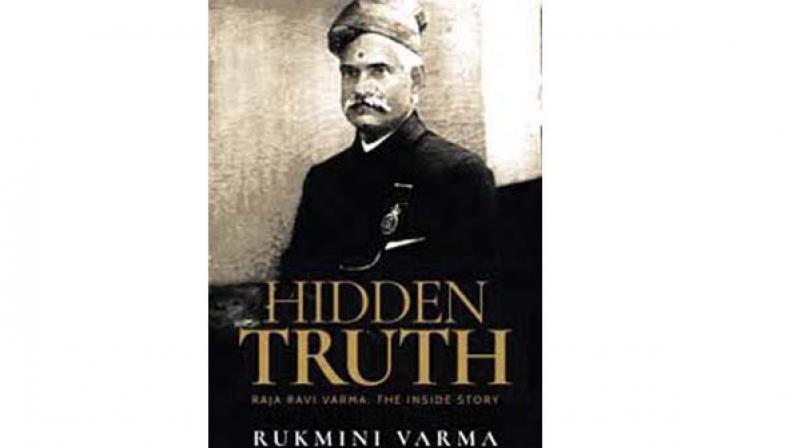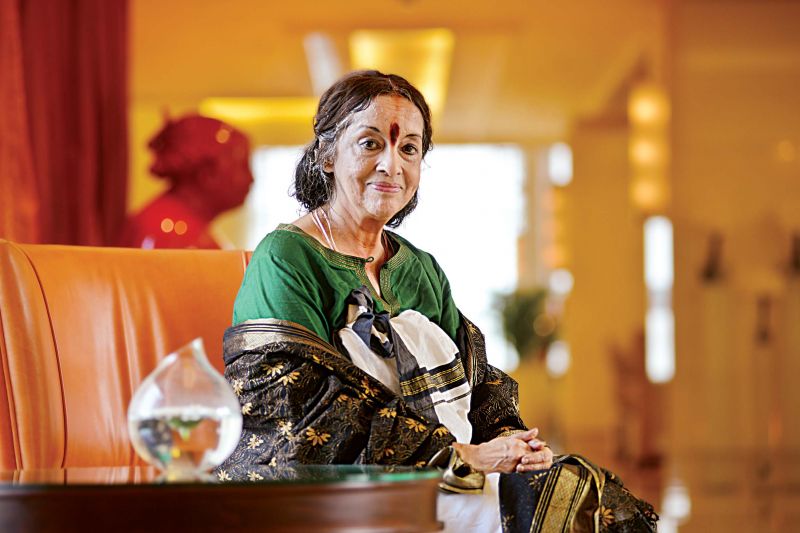The agony and the ecstasy: Unravelling Ravi Varma
A tall, white gate marks the frontier of the Varma property in the heart of Bengaluru.

“The body dies but the power of the mind lives on." As Rukmini Varma speaks, one's thoughts, well-trained as they are by the relentless compulsions of social media, cannot help but recollect the onslaught of spiritual jargon, the profusion of pocket-friendly wisdom that clutters the internet. The moment of frustration is dispersed almost at once: the world Rukmini Varma inhabits is far, far away from rabble-rousing online platforms; hers is a world immersed in history, spirituality and in art, all testament to a varied and eclectic mind.
A tall, white gate marks the frontier of the Varma property in the heart of Bengaluru. The smokey rush of the city streets fades away at once, opening out onto the quiet of the front yard, where a black cat sits on a wall, eyeing the newcomers with great suspicion. Inside, Rukmini Varma reclines on a divan in the far corner of the living room, "My knees are giving me some trouble," she explains.
 Rukmini Varma
Rukmini Varma
A summer breeze wafts lazily through the room and Rukmini, in her usual self-effacing way, proffers an explanation. "The wiring is too old even to accommodate fans."
The 200-year-old house is immersed in history - built by the East India Company, it served as the home of the army general. Winston Churchill, who arrived in Bengaluru as a cadet, was a frequent visitor too, often arriving to make use of the army mess. "That apart, restoring the place is too big a job," she admits. Perhaps this isn't the worst thing in the world for Rukmini, who remains, by her own admission, lost in the wisdom of the past, the rich world of her intuition.
Two days before the launch of Hidden Truth -Raja Ravi Varma: The Inside Story, the stress of a public appearance seems to be taking its toll. One year ago, Rukmini, the great, great granddaughter of the legendary artist, made her first resurgence from her self-imposed confinement, which lasted well over three decades. "I've always been happier in my own world, which is very different from reality." The realisation that the two worlds may not align came with a jolt, perhaps fortuitously some five years ago, as the Raja Ravi Varma Foundation began to spread its wings. "We needed information on him and there were scores of books about his life and his politics," she says. "What we didn't have was one that attempted to deconstruct his mind, to understand what made him tick."
Several years ago, a collection of handwritten books was given to Rukmini by a member of the Kilimanoor family. "Nobody was interested in it, it lay there in a corner." Rukmini couldn't retain the books either but she did pore over their handwritten pages. "It felt like my great great grandfather had a message for me." In the end, she turned to her own grandmother, Sethu Lakshmi Bayi, for stories about her famed ancestor. "She had heard much about him from her own mother, who was Ravi Varma's daughter and someone he loved very dearly. I was able to put it all together after that without using too much imagination."
Through all this, publishing was never an aspiration. An accomplished artist, the bearer of the Ravi Varma legacy, a trained dancer, sculptor and writer, Rukmini moves easily between mediums. "My granddaughter asked me which I prefer, art or writing. It's art and writing, as far as I'm concerned. Everything comes from the same source. The sword, the pen, the brush." This phrase finds its way into her book, for war, she says, was an expression of intuition and creativity, "People would wander through dangerous terrain and hone their senses to trouble. War was fought with rules, with the aim of stitching together a new societal fabric. Slowly, that gave way to the pen and the brush.
"The little boy held a piece of charcoal.... but they would never understand..." The opening lines of the book are reminiscent of a child, moving stealthily through chambers, bursting with a passion he could neither understand nor articulate. "At that moment he had to draw. It was more important than breathing."
Rukmini speaks for an hour, holding her audience with her usual aristocratic flair, an easygoing laugh and a self-deprecating sense of humour. Lately, Rukmini has spent her time studying the cosmos, a whole new realm of fanastical discovery. She talks of creativity and the cosmos, the science of the Vedas and the evolutions of religion, of quantum physicists like Louis de Broglie and Neils Bohr.
Much like his great -great-granddaughter, Raja Ravi Varma was an extremely intuitive man, whose life was defined by the search for revelation, for realisation. "Unlike me, however, he was extremely savvy in both his worlds. He moved from the internal to the external with ease. I can't do that. Going from the inner world to the outer world is unpleasant for I don't understand the latter. Ignoring my inner callings on the other hand, leads to a great deal of trauma," she says, her eyes shining.
This, however, is too big an occasion to be overwhelmed by doubt. "I tend to think that Ravi Varma engineered all this," she says with a laugh. "Everything fell into place and the time had come, I felt, to say the things I wanted to say." The title, 'The Inside Story', is a leading one and Rukmini's eyes twinkle with mischief as she says, "Yes, people are going to wonder if I'm writing about his affairs. I'm talking about his mind, though. That might disappoint a few readers!"
Of following one's intuition, studying visions that would come to her from time to time, and the trust she felt in the ineffable connection with her ancestor, she simply says, "Intuition is the most important thing, isn't it? Archaeologists and researchers gather facts but intuition brings them together. Without it, you have shards of pottery, mere skeletons of the life that once was."

